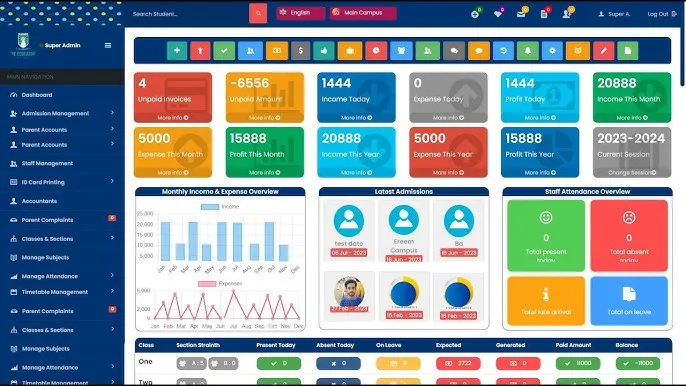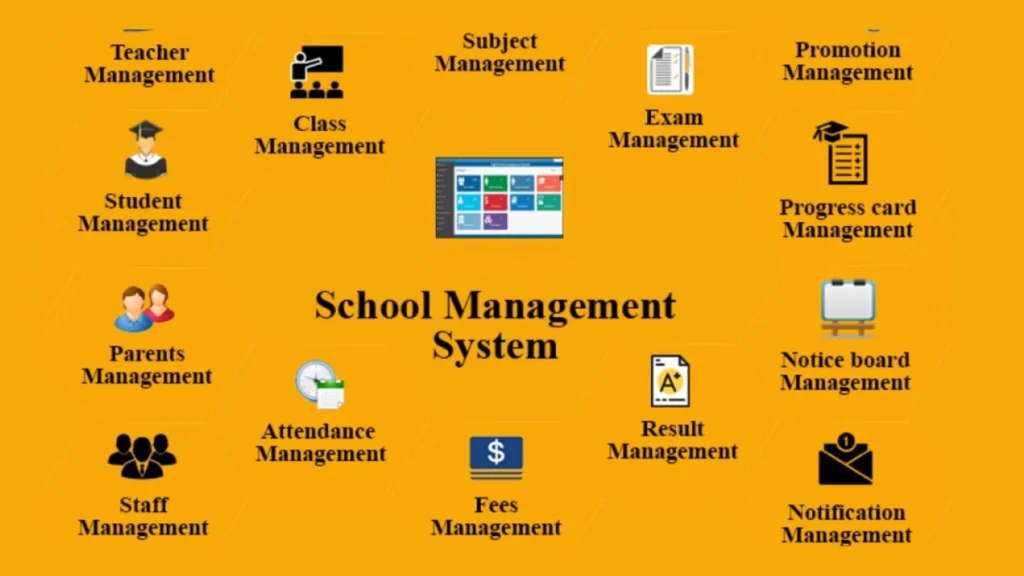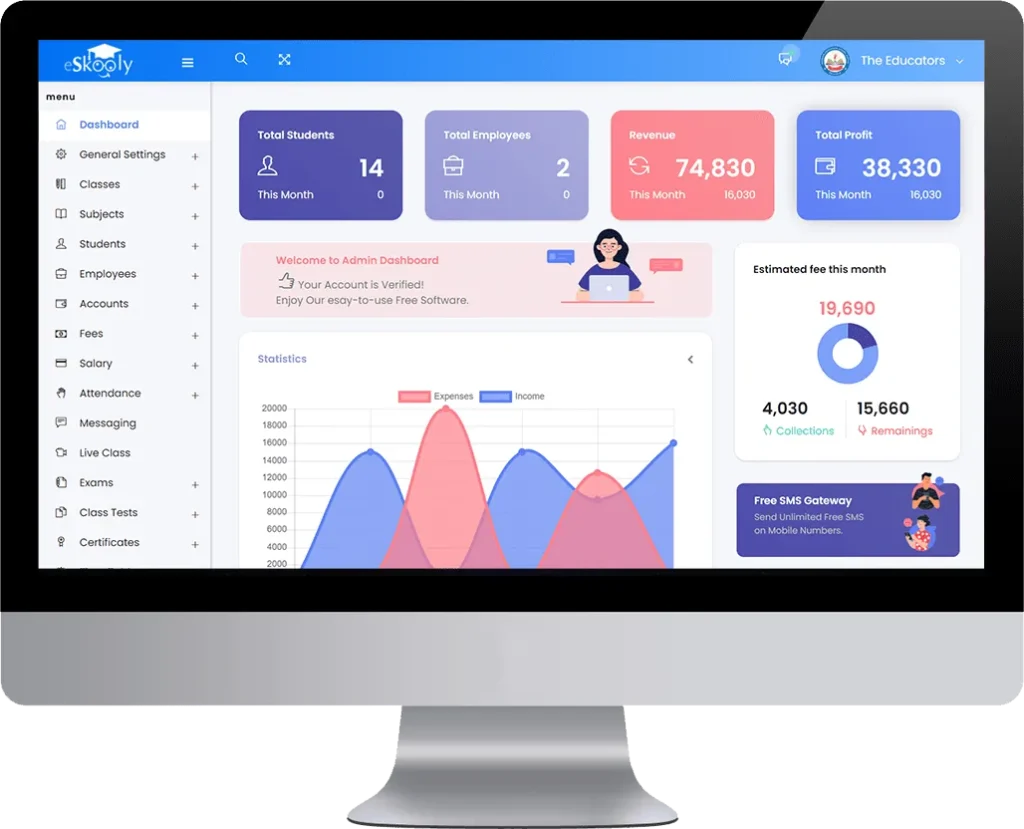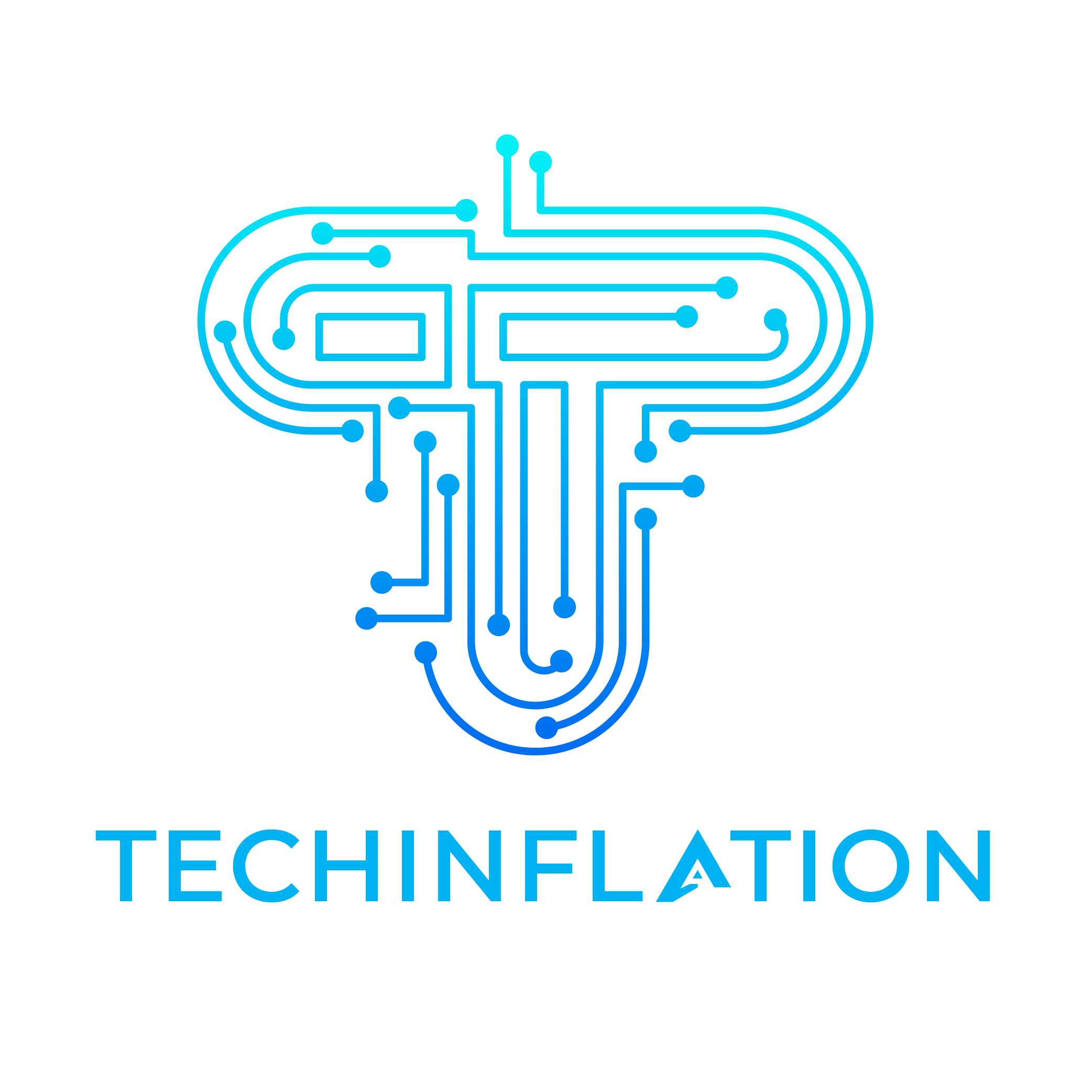In the fast-paced and ever-evolving world, managing a school can be quite a challenge. With systems related to student records, scheduling, performance tracking, and communication, the central administrative workload can get heavily burdened. Gladly, there is the School Management Software which aims to mitigate these very problems. However, the question remains, how has this piece of software formed an integral part of modern educational systems?
How has School Management Software enhanced the experience for students, and improved the efficiency of institutions? Let’s take a deeper look into the changes this technology brings.
What Exactly is School Management Software?
School Management Software, in the simplest terms, is a computer-aided tool that assists in automating and managing day-to-day operations. It consists of various functions that can serve as a centralized point where other stakeholders like teachers, students, and school management can complete all sorts of work collaboratively, such as:
- Monitoring attendance
- Enrolling and registering students
- Managing grades
- Facilitating communication between parents, students, and teachers
- Financial transactions
- Creating schedules and timetables
Those times when teachers relied on paperwork and Excel spreadsheets are long gone. With a few clicks, everything can be tracked and dealt with in a highly integrated system.
The Primary Benefits of School Management Software
1. Reduced Administrative Burden
Elimination of administrative work ranks among the most essential advantages of a School Management Software. Teachers, as well as administrative staff, can now have everything at the tip of their fingers—like student records, attendance, grades, schedules, etc.—and access them swiftly. In addition to enhancing record-keeping and documentation systems, this saves a lot of time and reduces human errors significantly.
To illustrate, a teacher can now configure the School Management Software in a way where students check-in or pre-determined schedules are set to track attendance. This automated system will help retain student attendance without human intervention.
2. Enhanced Interaction
Communication is paramount in the educational setup. Communication between teachers, students, and parents is elevated through the use of School Management Software as the parent system can now receive live feedback on their child’s grade, check assignments, and even chat with their teachers. At the same time, a teacher can send continuous alerts to inform parents about planned events and other school activities that need their attendance, or even voice any performance complaints.
This enhances the communication gap and also the transparency gap, allowing parents, students, and teachers to develop stronger ties with one another—courtesy of this software.
3. Enhanced Student Experience
No longer do decision-makers rely on intuition alone to make decisions. With School Management Software, administrators and educators have access to a plethora of information at the tip of their fingers. Everything from attendance records to student performance metrics is available and updated in real-time. This data is useful as it can be analyzed and used to make decisions that improve academic and operational performance within the school.
For instance, this data can be used to track student performance over time and determine trends.
4. Student-Centered Learning Environment
With School Management Software, students have enhanced accessibility to learning materials, assignments, and updates. Communication can be done verbally or in writing. Students can log in to the software, and everything is at their fingertips. Their grades and progress can even be monitored. This greatly facilitates the self-directed nature of every student’s learning.
5. Security and Compliance
As a school, you are tasked with keeping sensitive information safe, especially student records, which can be a hefty undertaking. This is why School Management Software was developed. There are stringent encryption measures that allow only a select group of authorized personnel to secure and access data. This is one precaution that schools take to ensure compliance with data security policies such as FERPA (Family Educational Rights and Privacy Act) and GDPR (General Data Protection Regulation).

Key Features of School Management Software
It is imperative to thoroughly evaluate the needs of your institution before settling on a School Management Software. A few of the important ones to consider are listed below:
1. Cloud-Based Access
Cloud-based software provides the flexibility that instructors, administrators, and learners alike can now access the system at a wide variety of locations and times. This means that whether a student is at home or in a school computer lab, cloud technologies have the ability to provide more access when compared to traditional technologies.
2. Customizable Dashboards
No two schools are the same, nor are their wants and needs. A good School Management Software should be flexible enough to allow schools to modify dashboards to suit them. This allows the relevant context to be displayed so that administrators can filter unnecessary information at a quick glance.
3. Learning Management Systems (LMS) with Integrated Modules
Many School Management Software (SMS) have Learning Management Systems seamlessly integrated into them. With such systems, a teacher can easily manage the posting of assignments, grades, and other relevant materials. This transforms the educational process into a more holistic and unified activity, and all educational and administrative functions are taken care of in one application.
4. Application Usability on a Mobile Device
Mobile access is, without a doubt, required in modern times. A more mobile-friendly version of the software will allow teachers and students to access information easily. This touchpoint proves very useful for parents who have to constantly keep tabs on their children’s progress and other aspects of school life.
10 Best School Management Software
A few of them made it to several notable Software Management Program lists due to their great services, ease of use, and effectiveness in enhancing administrative work. We now focus on the top 10 School Management Software units:
1. PowerSchool
PowerSchool is one of the most popular School Management Software due to the well-developed functions it avails for K-12 users. It has tools for grading, attendance, scheduling, communication, and even advanced analytics to assist with policy formulation. It is also one of the most versatile and configurable programs, making it usable across different school sizes.
2. Google Workspace for Education
Google Workspace for Education is more than just a collection of productivity tools. It has also become an important school management technology. Schools are provided with a cloud-based file storage system, emailing capability, document collaboration, and advanced features like Google Classroom for grading and assignment management. It easily connects with other tools and is, therefore, compatible with educational institutions that emphasize collaboration.
3. Microsoft 365 Education
The Microsoft 365 Education suite contains everything a school requires for effective school management. It contains communication tools (Teams), a document repository (OneDrive), as well as learning tools (Microsoft Teams or OneNote). Through the use of its cloud features, schools are able to control and use their resources effectively while working together, which meets the requirements of modern-day learning environments.
4. Blackboard Learn
Apart from being popular for its Learning Management System (LMS), Blackboard Learn is also a school administration tool. It covers gradebooks, course management, and student engagement, ensuring that both teaching and administrative roles are efficiently performed. Due to its extensive functionality, it is particularly well regarded in higher education institutions.
5. Canvas
The Canvas platform is designed to help teachers create an online learning environment for students. It is an easy-to-use and adaptable School Management Software system with tools for grading, assessment, communication, and more. Additionally, Canvas works with other software services, so it’s a good alternative for schools in need of flexibility in their teaching technologies.
6. Schoology
Schoology is an advanced Learning Management System (LMS) with added functionality for school management. It allows instructors to create assignments and manage them, store grades, and communicate with students and their guardians. Schoology also has the ability to integrate with other tools and has a mobile-friendly interface, which makes it a good choice for schools that emphasize digital teaching.
7. Fedena
Fedena is a complete School Management Software solution that contains modules for admissions, grades, attendance, timetable management, and others. It is better known for its user-friendly and adjustable features that appeal to individual schools regardless of their size, structures, or popularity. Fedena works best with K-12 schools and even some universities and colleges.
8. Classera
Classera is a simple School Management Software that promotes collaborative learning. It offers tools for managing assignments, grades, attendance, and communication among teachers, students, and parents. Its smart, easy-to-understand design makes it suitable for schools that need a straightforward solution.
9. iGradePlus
For grade management and monitoring the performance of students, iGradePlus is arguably among the most prominent tools available. It is suitable for both primary and secondary educational institutions, as well as higher education, and offers features such as communication tools, grade books, and attendance records. Users appreciate iGradePlus for its relative simplicity and superb client service.
10. Alma
Alma is flexible School Management Software that offers customized assistance toward the improvement of administrative functions. It provides functionalities such as gradebook, class schedule, attendance records, and student performance data analysis. Since it is user-friendly, combined with the fact that it works rather well with other tools, Alma presents strong competition for any institution aiming to improve efficiency.

Statistics That Justify the Growing Adoption of School Management Software
With educational institutions becoming more reliant on technology, School Management Software adoption has greatly increased. As reported by Technavio, the global education software market is projected to grow by USD 17.25 billion between 2020 and 2024. This points out the growth in the number of people who are actively looking for digital tools that can be used in education administration.
In addition, a report by MarketsandMarkets reveals that 33% of educational institutions across the globe currently use School Management Software, and this figure is expected to grow in the upcoming years.
The shift towards digital solutions is more than just a trend; it is manifesting itself into how schools function. The widespread adoption of these tools is proof enough that School Management Software has become not just beneficial but necessary to remain competitive and efficient in the modern era.
Use of School Management Software in Distance Learning
The COVID-19 pandemic acted as a catalyst in technology adoption in the educational space, especially when schools moved toward online and hybrid learning. School Management Software was central to ensuring a smooth transition for students and teachers alike. Many software providers were able to pivot their strategies in time to support remote learning with the integration of video conferencing, virtual classrooms, and online assignment management.
This change in pedagogical approach has impacted the way education will be delivered for years to come. While students and teachers return to in-person classes, many schools have adopted a hybrid approach to learning and teaching. This new normal allows for School Management Software to assist in providing an uninterrupted experience for students and teachers alike.

Conclusion
Adopting School Management Software in school operations will ensure better utilization of resources, increase transparency, and improve the quality of education being delivered at the school. As technology advances more, these School Management Software systems will only increase in importance in determining the future of education. The advantages are evident, ranging from improved administration to enhanced communications and even the use of data business intelligence techniques for decision-making.
Having stated the benefits and the growing adoption of School Management Software, is your school ready to undergo the next phase of digital transformation?










